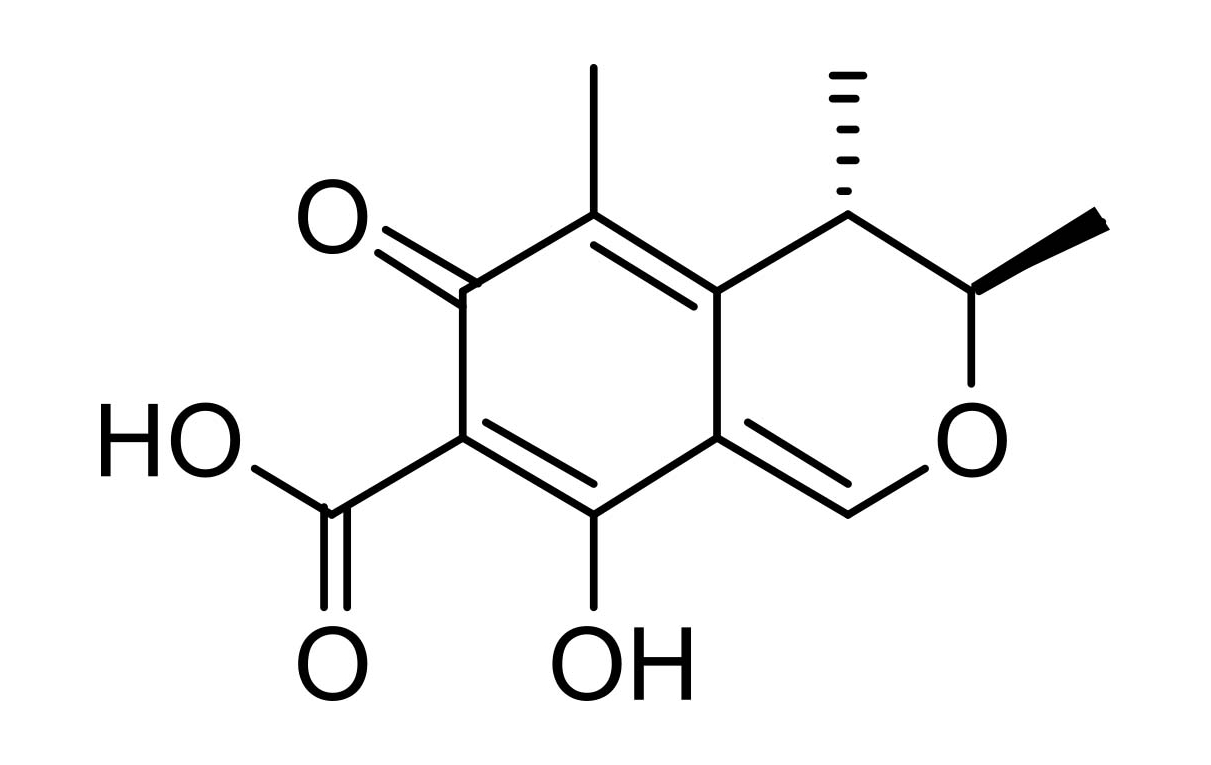Citrinin
Citrinin
$120.00 - 1 mg
$420.00 - 5 mg
All prices in Australian dollars
- Code
- BIA-C1242
- Synonyms
- Meleamycin, Antimycin, Monascidin A
- CAS #
- 518-75-2
- Molecular Formula
- C13H14O5
- Molecular Weight
- 250.3
- Purity
- >95% by HPLC
- Long Term Storage
- -20°C
- Solubility
- Soluble in ethanol, methanol, DMF or DMSO. Limited water solubility.
Download Data Sheets
Application Notes
Citrinin is a quinonemethine mycotoxin produced by diverse fungi including Aspergillus and Penicillium. Citrinin has been extensively investigated and is a potent nephrotoxin with hepatoxic and teratogenic activity. Citrinin is the causative agent of Balkan nephropathy and yellow rice fever in humans. At the molecular level, citrinin exhibits a range of effects including free radical damage to DNA and disruption of mitochondrial membrane-bound enzymic activities and structural integrity. Specifically, citrinin is an inhibitor of NADH dehydrogenase in the mitochondrial electron transport chain and this action is responsible for recent reports of citrinin's apoptotic activity.
References
- Studies in the biochemistry of micro-organisms. XI. On the production and chemical constitution of a new yellow colouring matter, citrinin, produced from glucose by Penicillium citrinum. Thom. Hetherington A. C.& Raistrick H. Phil. Trans. Roy. Soc. Ser. B. 1931, 220, 269.
- Co-occurrence of ochratoxin A and citrinin in cereals from Bulgarian villages with a history of Balkan endemic nephropathy. Vrabcheva T. JAFC 2000, 48, 2483.
- Yellow rice toxins. Luteoskyrin and related compounds, chlorine containing compounds, and citrinin. Saito M. et al., In: A. Ciegler, S. Kadis and S.J. Ajl (ed). Microbial Toxins. A Comprehensive Treatise. Vol. VI. Fungal Toxins, Academic Press, Inc., Baltimore 1971, 299.



